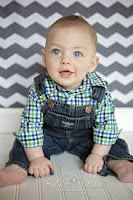Search This Blog
Helping Kids on the Autism Spectrum Who Get Frustrated Easily
 What you’re referring to here is low frustration tolerance (i.e., needing immediate pleasure or needing to avoid pain at the cost of long-term stress and defeatism). Low frustration-tolerance originates from the youngster’s dysfunctional and irrational beliefs. Behaviors are then the result of avoiding frustrating events which, paradoxically, lead to increased frustration and even greater mental stress.
What you’re referring to here is low frustration tolerance (i.e., needing immediate pleasure or needing to avoid pain at the cost of long-term stress and defeatism). Low frustration-tolerance originates from the youngster’s dysfunctional and irrational beliefs. Behaviors are then the result of avoiding frustrating events which, paradoxically, lead to increased frustration and even greater mental stress. - "I can't stand being frustrated, so I must avoid it at all costs."
- "I can't take this."
- "I can't wait that long."
- "I should always be happy and content."
- "It shouldn't be this difficult."
- "It shouldn't be this way."
- "My mom should stop doing things which annoy me."
- "Things must go my way, and I can’t stand it when they don't."
- "This is too much."
==> Parenting System that Reduces Defiant Behavior in Teens with Autism Spectrum Disorder
==> Launching Adult Children with Autism Spectrum Disorder: Guide for Parents Who Want to Promote Self-Reliance
==> Teaching Social-Skills and Emotion-Management to Children with Autism Spectrum Disorder
==> Parenting Children and Teens with High-Functioning Autism: Parents' Comprehensive Handbook
==> Unraveling the Mystery Behind High-Functioning Autism: Audio Book
==> Crucial Research-Based Parenting Strategies for Children and Teens with High-Functioning Autism
Resources for Neurodiverse Couples:
==> Online Group Therapy for Men with ASD
==> Online Group Therapy for NT Wives
==> Living with ASD: eBook and Audio Instruction for Neurodiverse Couples
==> One-on-One Counseling for Struggling Individuals & Couples Affected by ASD
==> Online Group Therapy for Couples Affected by Autism Spectrum Disorder
==> Cassandra Syndrome Recovery for NT Wives
==> ASD Men's MasterClass: Social-Skills Training and Emotional-Literacy Development
==> Pressed for time? Watch these "less-than-one-minute" videos for on the go.
The Female Version of High-Functioning Autism
High-Functioning Autism (HFA) affect behavior, personality, and the way the child interacts with others. The symptoms of HFA in females are usually displayed in a more subtle manner, which often results in missed or incorrect professional diagnoses, a lack of access to special education services and provisions in school, and a greater chance of social and emotional problems in adulthood.
Several distinct differences exist in regard to the ways that females with HFA behave as compared to their male counterparts, for example:
- “non-autistic” females will play with dolls by pretending that they are interacting socially, but HFA females may collect dolls and not use them to engage socially with their peers
- a girl with HFA is more likely to have interests that are common to “typical” females, whereas an HFA male is more likely to have an unusual interest (e.g., a girl may be obsessed with horses, while a boy may be obsessed with AAA batteries)
- acceptance from peers can sometimes mask the issues that these girls have so that they are not recognized by educators and parents, and as a result, they are less likely to suggest psychological and social evaluations for them
- they are highly intelligent, but like their autistic counterparts, possess poor language skills
- they are not often aggressive when they get frustrated; instead, they tend to be withdrawn and can easily "fly under the radar" in classrooms and other social environments
- fascination with certain subjects can lead to them lagging behind their peers in terms of maturity and age-appropriate behavior (e.g., a 13-year-old girl with HFA may be fascinated with stuffed animals or cartoons long after other peers her age have outgrown these things
- females with HFA may be more likely to internalize their emotions and experience inward or passive signs of aggression, whereas males often express their feelings and frustrations through emotional outbursts (these gender-related behaviors may be part of the reason that fewer females are diagnosed)
- females with the disorder often display obsessive tendencies in regard to animals, dolls, and other female-oriented interests
- girls on the autism spectrum are often less talkative than other females their age
- they are often protected and nurtured by their “non-autistic” friends who help them cope with difficult social situations
- girls with the disorder may be mistakenly assumed to have a personality disorder because they mimic typical kids, but use phrases inappropriately
- they are intrigued with fantasies that include magical kingdoms, princesses, and other fairy tale elements
- their behaviors are more passive than those typical of males with HFA
- girls on the spectrum often attempt to mimic the interests, behavior, and body language of others in an attempt to "fit in" – in fact, they become quite adept at this mimicking, causing them to elude diagnosis and treatment throughout life in many cases
- they are more able to express their emotions in a calmer way than their male counterparts
- they tend to be bored with others their age and have difficulty empathizing with peers

As females on the spectrum become adults, they may feel isolated because they react differently to certain "stressful" situations. Their comments can seem insensitive and uncaring, when in reality, they simply may not fully understand the concept of empathy. These young ladies often look for companionship with other adult females who have similar behavior patterns and outlook.
==> Parenting System that Reduces Defiant Behavior in Teens with Autism Spectrum Disorder
==> Launching Adult Children with Autism Spectrum Disorder: Guide for Parents Who Want to Promote Self-Reliance
==> Teaching Social-Skills and Emotion-Management to Children with Autism Spectrum Disorder
==> Parenting Children and Teens with High-Functioning Autism: Parents' Comprehensive Handbook
==> Unraveling the Mystery Behind High-Functioning Autism: Audio Book
Signs That a Toddler May Have High-Functioning Autism
While symptoms of High-Functioning Autism (HFA) are sometimes noticeable as early as infancy, many moms and dads sense something different about their undiagnosed youngster by his or her 3rd birthday. In some cases, early language skills are retained, but the lag in motor development may be the first sign that something is different than "typical" 3-year-old behavior.
Toddlers (approximately ages 1 to 4), may not show specific symptoms of HFA, but certain behavioral oddities may be noticed by parents as follows:
 Actions (e.g., waving or giving a toy when asked) seem like simple tasks. However, to a youngster with HFA, these simple gestures may not occur "on schedule" and may instead be delayed. This is because such gestures involve interaction between the youngster and another individual, which are difficult for kids on the autism spectrum.
Actions (e.g., waving or giving a toy when asked) seem like simple tasks. However, to a youngster with HFA, these simple gestures may not occur "on schedule" and may instead be delayed. This is because such gestures involve interaction between the youngster and another individual, which are difficult for kids on the autism spectrum.- Anomalies in nonverbal communication are often apparent in these young people. A lack of eye contact may occur accompanied by limited facial expressions which correspond with words the toddler is speaking. The youngster may also exhibit unusual body movements and gestures. These anomalies become more apparent by the age of 3.
- Joint attention is the concept that two individuals (e.g., child and parent) can be focused on the same thing (e.g., looking at a picture in a book together). A toddler with HFA may have a hard time getting this concept.
- Most HFA toddlers need to establish rigid repetition and routine in their daily activities in order to minimize “meltdowns,” sensory overload, anxiety, etc.
- A toddler with HFA may also show symptoms of ADHD.
- One of the developmental milestones of the first year of life is to be able to point to a desired object. By one year of age, a youngster will probably be pointing to objects that interest him or her. However, a toddler with HFA may not reach this milestone until later.
- One of the most apparent symptoms of HFA in toddlers is their intense interest in a single topic (e.g., fans, trains or maps). They often want to know - and spend a lot of time trying to learn - about their hobby or interest, and they may use an advanced vocabulary and exhibit a high level of expertise on the subject.
- Problems with motor skills are a common symptom. Delayed learning is usually noticeable in kids on the autism spectrum by the age of 3 (e.g., playing catch, potty training, learning to ride a bike, walking on tip toes, etc.). Their movement may be described as clumsy or uncoordinated.
- Repetitive interests and behaviors are defining components of the diagnosis of HFA. However, repetitive interests are essentially very normal in toddlers. While it is very difficult to determine with such young kids, some signs that behaviors and interests have crossed the line from, for example, "a normal toddler who loves planes" to "an obsessed toddler who seems too wrapped up in planes" may be noticed by parents. These include a very specific interest (e.g., not just "planes" but "the wings of planes") – an interest that is unusual compared to the HFA child’s peers (e.g., a 3-year-old who intensely focuses on AAA batteries). The child may also find it difficult to shift focus from the area of interest to other things.
- Some toddlers on the autism spectrum will have an unusual sensitivity to loud sounds or lights. They may also be bothered by other physical stimuli (e.g., sensitivity to the way certain clothing or material feels, the need to have their socks to be on their feet in a particular way, etc.).
- The interests of a toddler with HFA tend to be very limited, causing the youngster to have a verynarrow focus of activities and interests.
- The child may seem to have one-sided social interaction and limited ability to form friendships.
- He or she may often talk incessantly about one subject, without acknowledging the listener.
- Toddler’s with HFA usually have difficulty in social situations (e.g., imaginative play with other kids).
- They are often not diagnosed until later in childhood as they sometimes learn to read very early. The perceived advancement overshadows the fact that the youngster with HFA often can’t comprehend the words he or she is reading.
- Unlike toddlers with autism, a toddler with HFA generally does not experience difficulties in language development and speech. Vocabulary is often advanced with HFA, though as language develops, the parent may notice that the youngster has difficulty properly using his or her vocabulary.
==> Parenting System that Reduces Defiant Behavior in Teens with Autism Spectrum Disorder
==> Launching Adult Children with Autism Spectrum Disorder: Guide for Parents Who Want to Promote Self-Reliance
==> Teaching Social-Skills and Emotion-Management to Children with Autism Spectrum Disorder
==> Parenting Children and Teens with High-Functioning Autism: Parents' Comprehensive Handbook
==> Unraveling the Mystery Behind High-Functioning Autism: Audio Book
==> Crucial Research-Based Parenting Strategies for Children and Teens with High-Functioning Autism
Resources for Neurodiverse Couples:
==> Online Group Therapy for Men with ASD
==> Online Group Therapy for NT Wives
==> Living with ASD: eBook and Audio Instruction for Neurodiverse Couples
==> One-on-One Counseling for Struggling Individuals & Couples Affected by ASD
==> Online Group Therapy for Couples Affected by Autism Spectrum Disorder
==> Cassandra Syndrome Recovery for NT Wives
==> ASD Men's MasterClass: Social-Skills Training and Emotional-Literacy Development
==> Pressed for time? Watch these "less-than-one-minute" videos for on the go.
Can Parents Detect High-Functioning Autism In Their Infant?
With these facts in mind, some symptoms of HFA may be detected in infancy:
- Some kids with HFA fail to attain certain “expected” milestones within the first year (e.g., unassisted standing, crawling, simple gestures including waving, etc.).
- An infant with HFA may fail to interact appropriately with his or her environment (e.g., avoid eye contact and interactions, prefer solitude, avoid attention or affection, etc.).
- Later in infancy, some may show problems reacting with activities and objects (e.g., over react - or fail to react at all).
- Initial signs of repetitive behaviors may emerge at this time (e.g., rocking).
- Babies with HFA can exhibit abnormal methods of non-verbal communication (e.g., failure to look another person in the eye and have appropriate facial expressions, failure to exhibit predictable body postures or gestures).
- They may not exhibit a social smile until much later on in life.
- Infants no the autism spectrum may totally ignore the voices of the parents or strangers, or conversely cry and become irritable when confronted with any form of social contact.
- The child’s first words are often unusual. For example, more complex words, such as "mountain" or "sheetrock" may emerge before simpler words, such as "Mama" or "Dada."
- They may become obsessed with complex topics (e.g., intricate patterns or music).
- These kids may be unable to focus on any other aspect of the environment once they notice the object of their obsession.
- Uncoordinated movements are a common symptom in HFA. Kids with the disorder may be seen moving clumsily and be unable to coordinate movements of the hands or feet. They may exhibit an odd posture or have a stiff, rigid gait. In addition, they may show a delay in learning how to crawl or walk, and can exhibit a delay in fine motor movements (e.g., grasping an object).
- Infants with HFA appear to demonstrate abnormal reflexes versus “normal” kids. They tend to exhibit a persistence of the asymmetrical tonic neck reflex beyond their fourth month of life (when the reflex generally disappears). When infants 4 months and older without HFA roll over, they turn in the same direction that their head is facing. Asymmetrical tonic neck reflex is the opposite of this (i.e., the infant turns over in the opposite direction to where the head is facing).
- They may lack reflexes that should develop by a certain age, such as the head-verticalization reflex at 6 to 8 months. An infant who has developed this reflex will maintain his head in a vertical position when his body is tilted. Infants with HFA show delays in this reflex (i.e., their heads will tilt along with their bodies).
==> Parenting System that Reduces Defiant Behavior in Teens with Autism Spectrum Disorder
==> Launching Adult Children with Autism Spectrum Disorder: Guide for Parents Who Want to Promote Self-Reliance
==> Teaching Social-Skills and Emotion-Management to Children with Autism Spectrum Disorder
==> Parenting Children and Teens with High-Functioning Autism: Parents' Comprehensive Handbook
==> Unraveling the Mystery Behind High-Functioning Autism: Audio Book
==> Crucial Research-Based Parenting Strategies for Children and Teens with High-Functioning Autism
Resources for Neurodiverse Couples:
==> Online Group Therapy for Men with ASD
==> Online Group Therapy for NT Wives
==> Living with ASD: eBook and Audio Instruction for Neurodiverse Couples
==> One-on-One Counseling for Struggling Individuals & Couples Affected by ASD
==> Online Group Therapy for Couples Affected by Autism Spectrum Disorder
==> Cassandra Syndrome Recovery for NT Wives
==> ASD Men's MasterClass: Social-Skills Training and Emotional-Literacy Development
==> Pressed for time? Watch these "less-than-one-minute" videos for on the go.
Tips for Teachers: Strengths-Based Education for Kids on the Spectrum
==> Struggling with your "special needs" student? Click here for highly effective teaching strategies specific to the Aspergers and HFA condition.
"Learned Helplessness" in People on the Autism Spectrum
==> Parenting System that Significantly Reduces Defiant Behavior in Teens with Aspergers and High-Functioning Autism
==> Launching Adult Children with Asperger's and High-Functioning Autism: Guide for Parents Who Want to Promote Self-Reliance
ASD: Difficulty Identifying and Interpreting Emotional Signals in Others
Autism spectrum disorder (ASD) is a complex neurodevelopmental condition that affects an individual's ability to communicate, interact w...

-
Fixated Personality -- The fixated personality type can be characterized by a preoccupation with orderliness, perfectionism, and the n...
-
Below you will find the majority of symptoms associated with High-Functioning Autism (HFA), also referred to as Asperger’s. The HFA chil...
-
"Is there a list of symptoms or traits associated with high functioning autism in children? We currently have suspicions that our 6 y...
















